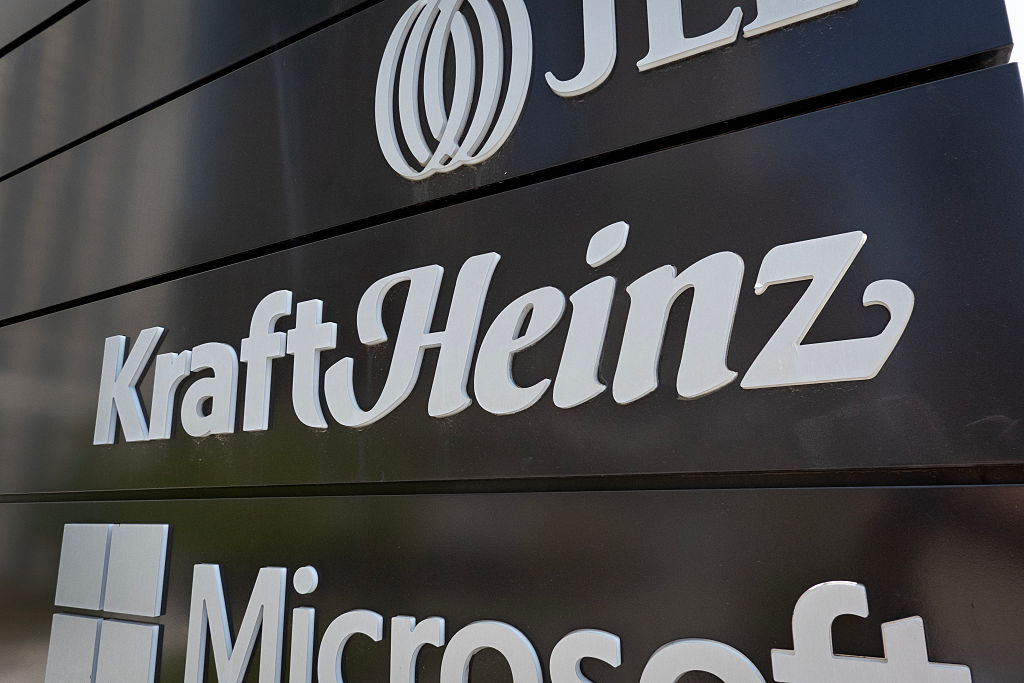My 10 Stocks for 2007
My list for 2006 returned 33% -- my best-ever margin over the S&P 500. This year, I try it again.

For the fourth year in a row, the performance of my annual list of stock picks was -- well, there's no better word for it -- spectacular. And I keep getting better. Most years since 1995 (I took a hiatus for three years), I have offered readers of the Washington Post and now Kiplinger's ten stocks, selected from choices of experts whom I respect. The list for 2006 returned 33% for the 12 months ended January 1, including reinvested dividends, compared with 16% for Standard & Poor's 500-stock index. It was my second-best margin over the benchmark. (View returns for each of my 2006 stock picks.) The 2005 list beat the S&P by 18 percentage points; the 2004 list beat it by 11; the 2003 list, by seven. It's time to try again.
Three disclaimers. First, stocks are chosen for their likely performance for the year ahead, even though I strongly object to any stock-investment strategy with such a short time horizon. Second, while the companies vary by sector and size, they are not a diversified portfolio. And third, no guarantees of success. Oh, and one more thing. Last year's list was hugely volatile. Two stocks more than doubled, and two others gained at least 48%, but four fell in price. Avoid putting too many of your eggs in any of these individual baskets.
Return to the limelight
Jay Weinstein, of Oak Forest Investment Management, in Bethesda, Md., my guru for undervalued, ultra-small companies, in 2005 picked Atrion (symbol ATRI), a medical-products company, and it jumped 57%. For 2006, he chose Astronics (ATRO), only one letter away, and it rose 60%. Now, for 2007, he's back to Atrion. "Chief executive Emile Battat and his chief financial officer, Jeff Strickland, have done a phenomenal job building shareholder value," Weinstein tells me. He sees Atrion ending 2007 with no debt and $6 a share in earnings. So at current prices you are paying a multiple of 13 times earnings -- puny for a company growing at better than 15% annually. Weinstein reveals that his clients own a big chunk of the stock. But with a market capitalization (shares outstanding times the stock price) of just $145 million, the share price is apt to be volatile.
From just $107.88 $24.99 for Kiplinger Personal Finance
Become a smarter, better informed investor. Subscribe from just $107.88 $24.99, plus get up to 4 Special Issues

Sign up for Kiplinger’s Free Newsletters
Profit and prosper with the best of expert advice on investing, taxes, retirement, personal finance and more - straight to your e-mail.
Profit and prosper with the best of expert advice - straight to your e-mail.
Last year, I said Tom Brown "is probably the best financial-stock analyst in the business." After the performance of First Marblehead (FMD), which returned 152% (best on my list for 2006) and which, by the way, Brown still likes, I am going to drop the "probably." For the year ahead, one of the holdings of Brown's hedge fund jumps out: CompuCredit (CCRT). The company focuses on the subprime lending market, issuing credit cards, auto loans, and small "payday" advances to people without the best creditworthiness. CompuCredit is a smart operator in a tough business. "Earnings growth and profitability have been strong -- and figure to stay that way," writes Brown, but "CompuCredit's stock trades at an extremely low valuation" -- just eight times the $4.60 in earnings per share that Brown expects in 2007.
I have rhapsodized over Hennessy Cornerstone Growth, a mutual fund that follows a stock-picking formula that screens for rising earnings, a low price-to-sales ratio and above-average stock-price increases. The fund has returned an annualized 17% over the past five years. Its low price-to-sales criterion means that an abundance of retailers and energy companies qualify for the portfolio, so I prefer to look for stocks in other sectors. One of the best is Emcor Group (EME), which designs, operates and maintains sophisticated electrical and mechanical systems for factories, utilities and office buildings. The stock is pricey, but growth is impressive, with profits expected to rise by one-third in 2007.
A health-care pick
Fidelity Equity-Income fund in 2006 beat the S&P 500 for the seventh year in a row, at risk levels well below the benchmark. Managed by Stephen Petersen for the past 13 years, the fund owns large-company stocks that pay nice dividends. Petersen is adding to the fund's holdings of Johnson & Johnson (JNJ), maker of drugs, medical devices and consumer health products. Although the business could be under the gun of a Democratic Congress, shares trade at a modest valuation of 16 times expected 2007 earnings, with a dividend that's rising at a consistent, double-digit rate.
Value Line Investment Survey has a great record for picking stocks. As of December 1, only two of the roughly 2,000 stocks that Value Line covers received top ratings for both timeliness and safety: Lockheed Martin and Du Pont. It's a tough choice, but I slightly prefer Lockheed Martin (LMT), the aerospace company. Its stock has doubled since early 2004 but still trades at a price-earnings ratio of 16, based on estimated 2007 earnings. Plus, its volatility is well below the market as a whole.
Magazines and more
I'm a fan of money manager Joel Greenblatt, author of The Little Book That Beats the Market, which sensibly advocates a stock-picking strategy that combines both growth and value elements. Greenblatt operates a free stock screener at www.magicformulainvesting.com. When I tried it last year, the screener produced 25 attractive selections, of which I picked American Eagle Outfitters. It returned a juicy 106%. Facing another 25 choices, I am drawn to Meredith (MDP), publisher of Better Homes & Gardens and other magazines and owner of 14 television stations. At a time when traditional media are out of favor, Meredith has been increasing its profits at a rapid pace. Nevertheless, it carries a modest valuation.
Ric Prentiss, the top telecom analyst at Raymond James & Associates, a brokerage with an exceptional track record for stock picking, tells me his best idea right now is a small company with an unwieldy name -- Ntelos (NTLS). It sells wireless phone and Internet service to customers in Virginia and West Virginia. Also, Ntelos sells wholesale wireless service to Sprint and, says Prentiss, it should benefit as Sprint moves its newly acquired Nextel customers to the CDMA technology that Ntelos provides. A big attraction of the stock, says Prentiss, is that it's cheap compared with similar businesses. Why? The company, founded in 1897, is "still not very well known." That's what we like in a stock: market inefficiency.
Friess Associates, which manages $12 billion in assets through vehicles such as the wonderful Brandywine fund, has kind words for SkyWest (SKYW), a regional airline that, in the words of the Friess newsletter, Looking Forward, "receives payment [from Delta and United] for each completed departure rather than on a percentage-of-revenue basis, minimizing the effects of load factors and fuel price hikes." Considering its rate of profit growth, the stock trades at a low valuation of nine times expected 2007 profits.
After two big losers in a row, the Prudent Speculator newsletter has been placed in my penalty box, and I'm returning to an old favorite among newsletters, Dow Theory Forecasts, for a selection. We need an energy company for 2007, and highly rated on the Dow Theory buy list is ConocoPhillips (COP), which has been rearranging its portfolio in a way that appears perspicacious. For example, Conoco's purchase of Burlington Resources in March 2006 made it the largest natural-gas producer in North America -- a smart move in a tight market. Based on expected 2007 earnings, shares trade at a P/E of just 8 and yield 2.1%.
Unloved and little known
Now, here's a contrarian stock. Universal Forest Products (UFPI) makes wood and plastic building products, such as roof trusses, for the construction and do-it-yourself sectors. With the decline in the housing market, the stock skidded 40% between May and December. It is, however, a selection of one of my favorite analysts, Cleveland-based Elliott Schlang, of Great Lakes Review, who focuses on midwestern stocks in boring industries. He likes companies with heavy insider ownership, strong cash flow and solid balance sheets. Universal meets the criteria and, trading at a P/E of 12 based on estimated 2007 earnings, it looks awfully cheap. That's the list. Just remember warning number three.
Columnist James K. Glassman is a senior fellow at the American Enterprise Institute and editor-in-chief of its new magazine, The American. Of the stocks mentioned, he owns First Marblehead.
[Editor's note: Returns have been updated to reflect full 2006 performance.]
Ten stocks for 2006: How they performed
Columnist James Glassman's picks, in our March 2006 issue, as a group, had a spectacular year. Although four lost money, his 2006 picks outperformed the S&P 500 by 17 percentage points, his second-best margin over the benchmark.
| COMPANY | SYMBOL | RECOMMENDED BY | TOTAL RETURN |
| American Eagle Outfitters | AEOS | Joel Greenblatt | 106% |
| Astronics | ATRO | Jay Weinstein | 59 |
| Berkshire Hathaway B | BRK.B | Whitney Tilson | 25 |
| Brightpoint | CELL | Value Line Investment Survey | -13 |
| D.R. Horton | DHI | The Prudent Speculator | -24 |
| EnCana | ECA | Fidelity Contrafund | 3 |
| Expedia | EXPE | Legg Mason Value Trust | -12 |
| First Marblehead | FMD | Tom Brown | 152 |
| Ryanair Holdings | RYAAY | Raymond James & Associates | 46 |
| Sierra Health Services | SIE | Hennessy Cornerstone Growth | -10 |
| AVERAGE | Row 11 - Cell 1 | Row 11 - Cell 2 | 33% |
| S&P 500-STOCK INDEX | Row 12 - Cell 1 | Row 12 - Cell 2 | 16% |
Data to January 1. Source: Bloomberg.
Profit and prosper with the best of Kiplinger's advice on investing, taxes, retirement, personal finance and much more. Delivered daily. Enter your email in the box and click Sign Me Up.

-
 I'm want to give my 3 grandkids $5K each for Christmas.
I'm want to give my 3 grandkids $5K each for Christmas.You're comfortably retired and want to give your grandkids a big Christmas check, but their parents are worried they might spend it all. We ask the pros for help.
-
 If You're Not Doing Roth Conversions, You Need to Read This
If You're Not Doing Roth Conversions, You Need to Read ThisRoth conversions and other Roth strategies can be complex, but don't dismiss these tax planning tools outright. They could really work for you and your heirs.
-
 Could Traditional Retirement Expectations Be Killing Us?
Could Traditional Retirement Expectations Be Killing Us?A retirement psychologist makes the case: A fulfilling retirement begins with a blueprint for living, rather than simply the accumulation of a large nest egg.
-
 What the Rich Know About Investing That You Don't
What the Rich Know About Investing That You Don'tPeople like Warren Buffett become people like Warren Buffett by following basic rules and being disciplined. Here's how to accumulate real wealth.
-
 How to Invest for Rising Data Integrity Risk
How to Invest for Rising Data Integrity RiskAmid a broad assault on venerable institutions, President Trump has targeted agencies responsible for data critical to markets. How should investors respond?
-
 What Tariffs Mean for Your Sector Exposure
What Tariffs Mean for Your Sector ExposureNew, higher and changing tariffs will ripple through the economy and into share prices for many quarters to come.
-
 How to Invest for Fall Rate Cuts by the Fed
How to Invest for Fall Rate Cuts by the FedThe probability the Fed cuts interest rates by 25 basis points in October is now greater than 90%.
-
 Are Buffett and Berkshire About to Bail on Kraft Heinz Stock?
Are Buffett and Berkshire About to Bail on Kraft Heinz Stock?Warren Buffett and Berkshire Hathaway own a lot of Kraft Heinz stock, so what happens when they decide to sell KHC?
-
 How the Stock Market Performed in the First 6 Months of Trump's Second Term
How the Stock Market Performed in the First 6 Months of Trump's Second TermSix months after President Donald Trump's inauguration, take a look at how the stock market has performed.
-
 Fed Leaves Rates Unchanged: What the Experts Are Saying
Fed Leaves Rates Unchanged: What the Experts Are SayingFederal Reserve As widely expected, the Federal Open Market Committee took a 'wait-and-see' approach toward borrowing costs.
-
 Fed Sees Fewer Rate Cuts in 2025: What the Experts Are Saying
Fed Sees Fewer Rate Cuts in 2025: What the Experts Are SayingFederal Reserve The Federal Reserve cut interest rates as expected, but the future path of borrowing costs became more opaque.